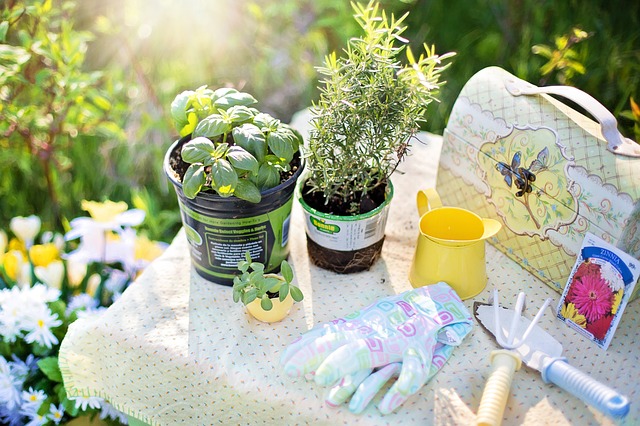8 Mistakes New Herb Gardeners Make And How To Avoid Them!

1. Starting with the wrong varieties
Start by trying to grow fresh basil. It is the perfect trainer herb. First, basil grows quickly, allowing you to observe the effects of your care more easily. Second, basil leaves wilt visibly when not watered enough, but recovers well if you water the wilted plant. This makes basil a great ‘canary in the mineshaft’ to help you figure out how much water is enough.
2. Watering herbs like houseplants
Instead, water herbs a moderate amount every day.
3. Not cutting early and often
Again, basil is a great herb to practice pruning. As with all herbs, you want to cut the herb just above a set of growing leaves. With basil, when you cut the plant that way, the originally trimmed stem will no longer grow. However, two new stems will grow around the original cutting, creating a “V” shape. If you don’t trim basil aggressively, it will continue to grow straight up, and become too tall and top-heavy. Making your first trim approximately 3-4” above the soil produces a nice sturdy plant.
4. Taking the leaves from the wrong place
When you are just starting out it seems to make so much sense to pick off a few big leaves around the bottom of the plant, and let those tender little guys at the top keep growing. Wrong. Leave those large tough old guys at the bottom alone. They are the solar panels that power your herb’s growth. Once your plant is big enough to sustain a decent harvest, keep on taking from the top, as you have been when you were pruning.
5. Using tired soil with no nutrients
Give your plants a dose of the good stuff and they’ll thank you for it. Try growing them in a combination of potting soil, used coffee grounds (with a near-neutral PH, available for free at Starbucks), and organic compost. You can throw in crushed egg shells also. Those without access to compost (and no deep commitment to organic growing) may find Miracle grow useful.
6. Getting in a rut
Once you have become comfortable with basil, you can try growing oregano, mint, rosemary and thyme. All are regularly useful herbs in the kitchen, and all are relatively easy to grow. You will notice that rosemary cleaves after cutting in a somewhat similar way to basil, but grows much more slowly, so the effect is difficult to notice. Some plants also respond to clipping by throwing out more full leaves at their base.
7. Choosing herbs
When choosing herbs, read the label carefully. For example, there are two main varieties of oregano: Mediterranean and Mexican. Mediterranean oregano is the more common variety, and what you likely own if you have conventional dried oregano in your cupboard.
There are many different kinds of mint also. You don’t want to be thinking of the pungent spearmint plant and accidentally take home the much more subtle applemint by mistake.
8. In soil or in pots?
If you are planting in soil instead of pots, take care that your cute little herb seedling doesn’t become a giant plant that takes over your garden. A word of warning for oregano and mint: both can be voracious growers. If you are planting outside in a garden, rather than in pots, you may want to consider potting these herbs and then burying the pots in the ground. This will add a measure of control to the root systems of these herbs, which can otherwise take over a garden and strangle nearby neighbors.


